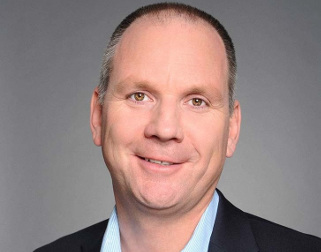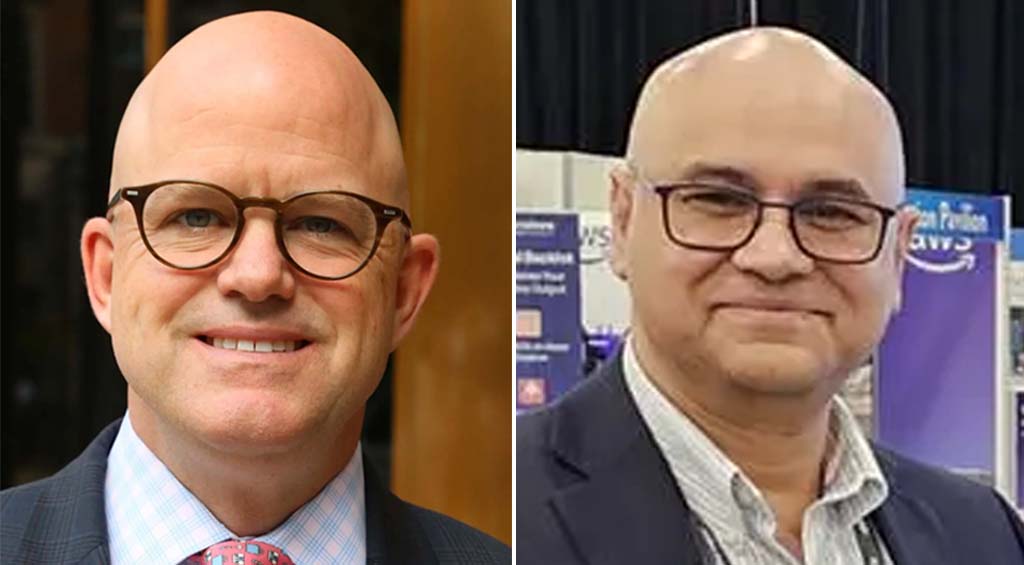FS1 Mics Coaches, Goes Commercial Free for Big East Game
LOS ANGELES—There’s definitely a difference between being a player or coach in a timeout huddle and sitting in the stands. Take that distinction one step further for fans sitting at home in front of their televisions. However, FS1 tonight plans to erase those distinctions—at least a bit—during the Providence vs. DePaul Big East men’s basketball game (8:30 p.m. ET).

John Entz
FS1 will jettison its normal commercial breaks and mic up Friars coach Ed Cooley and Blue Demons coach Dave Leitao to bring viewers onto the bench, inside huddles and into the locker room during halftime and postgame. While FS1 previously has used a similar setup for two women’s college basketball contests—one last season and one about a week ago—tonight’s game will be the first time the broadcaster is using the commercial-free, mic’d coach setup for a men’s game.
In this interview, John Entz, president of production for Fox Sports, discusses how and why FS1 is taking this approach and what it might mean to attracting and holding the interest of younger viewers.
(An edited transcript.)
TVTechnology:Tell me about the thinking behind micing the coaches and going commercial free?
John Entz: The idea is we want to stay with the action the entire way and frankly give the viewers an experience they have never seen before. We’ve done it twice with women’s games. We did it once last year and once last week.
The professional video industry's #1 source for news, trends and product and tech information. Sign up below.
This is the first time a men’s game has gotten this type of coverage. Not going away during commercial gives you a feel like you are right there in the arena, and you are also listening to the coaches and players in the huddle and getting an idea what to look for.
During a timeout, you get bits and pieces in a normal broadcast, but you possibly never get to see what happens during the whole timeout from this vantage point.
TVT:From a production point of view, how is that going to be handled since both coaches will be talking to their respective players at the same time?
JE: We’ll bounce back and forth. We’ll try to give them equal coverage, similar to how we do when we are outside or inside the locker room.
We did a women’s game last week, and you just get this really interesting, unique visual of the coaches sitting on the steps before they even go into the locker room devising a game plan and then going in to see the players and actually communicate it to them. It’s all part of the process that viewers don’t normally see.
Back to the timeout, sometimes the coaches huddle themselves before they go talk to the players. And we will see that. It depends on the situation. So, yes, we will bounce back and forth and try to give equal coverage to both.
TVT:Is it hard to convince the coaches to get mic’d up for a game?
JE: It’s really a testament to [Big East Conference Commissioner] Val Ackerman and the Big East Conference and the trust level that we have built with each other over the years.
If we were to have asked the coaches four or five years ago, it would have been a pretty quick no. This is the case in every sport. The coaches generally don’t want to give us this access. Luckily, we have been able to build up this trust.
Steve Scheer, who is the producer, sat with Ed Cooley last night, and it is not comfortable for him, quite frankly. It’s not something he is used to doing. But because we are lucky enough that he trusts Steve and trusts Fox as a whole, and the Big East trusts Steve and Fox as a whole, we are able to do it.
Because we did it last year, and it was so well-received and came off so successfully, it gave us a springboard to try it again this year with a men’s game.
TVT:Can you tell me a little bit about the tech setup?
JE: Basically, the technical setup is both coaches are wired [with wireless mics]. Both locker rooms are wired. We have additional bench and court microphones. We have cameras dedicated to each head coach at all times on the court and in the locker rooms. We will also provide the coaches’ audio-only on FOX Sports Go. We have three cameras with 95x lenses and three cameras with 24x lenses, three replay operators with all the cameras being recorded full time during the pregame and game to recap action, four transmission paths and a 45-person crew. So, this is not your normal technical setup.
TVT:What do you do for a backup—especially with the wireless mics on the coaches?
JE: We try to have backups on everything, whether it’s the batteries or cameras. You can never predict what is going to happen. For instance, last week it was so cold in the East that we did lose transmission. You have to have a backup ready for that. You have to have backups for everything you can imagine could possibly fail.
TVT:What about the business side of this—cutting out the commercial breaks. Is that a problem?
JE: It’s something we probably couldn’t do every game, I guess, right? Obviously, there is a financial piece to it. But our sales team has been fantastic in realizing what a unique opportunity this is for the conference, for Fox and really for the viewers.
This type of coverage is really just different and opens your eyes. This has been so successful, and we believe in it so much that, yes, there is a financial impact. Is it worth it? In the big picture, yes.
TVT:Would you like to add anything else?
JE: When we first did this last year, I sat there and watched and thought this is interesting, unique and frankly a fun event production. We are constantly talking about how to get to the next level at Fox. How do we do things differently? How do we appeal to the Millennials? This is one approach that feels completely different and innovative.
Now to be doing this on a bigger stage is really exciting. Anybody who has watched this [during the women’s games] walked away with the feeling that this truly is different and could be the future.
Phil Kurz is a contributing editor to TV Tech. He has written about TV and video technology for more than 30 years and served as editor of three leading industry magazines. He earned a Bachelor of Journalism and a Master’s Degree in Journalism from the University of Missouri-Columbia School of Journalism.

